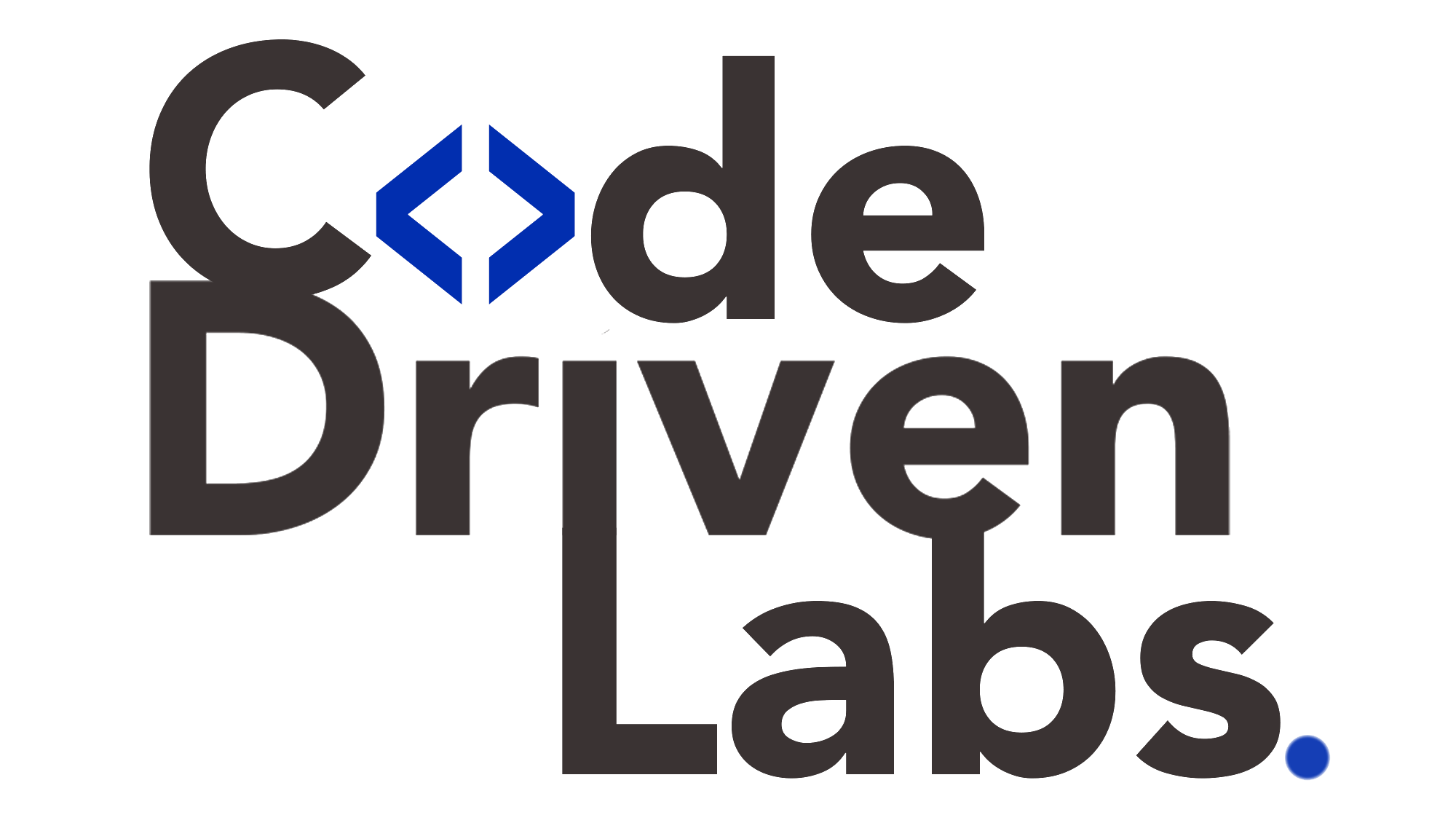Level up your business with US.
- Home
- How Cloud-Native Development is Transforming Software Engineering in 2025
How Cloud-Native Development is Transforming Software Engineering in 2025
July 28, 2025 - Blog
How Cloud-Native Development is Transforming Software Engineering in 2025
In 2025, cloud-native development has emerged as the norm—not the exception—for software engineering. With businesses demanding faster releases, increased scalability, and improved resiliency, cloud-native techniques enable organizations to build powerful, distributed applications that serve millions of users reliably.
This blog explores how cloud-native development is reshaping architecture, workflows, and business outcomes, and explains how Code Driven Labs helps enterprises accelerate their journey with cloud-native engineering.
What Is Cloud‑Native Development?
Cloud-native development refers to designing, building, and running applications that fully leverage cloud environments—such as public, private, or hybrid clouds. Core principles include:
-
Microservices architecture: Independent services deployed separately
-
Containerization: Packaging code and dependencies using Docker or similar tools
-
Dynamic orchestration: Using Kubernetes or serverless platforms for scalable deployments
-
Infrastructure as Code (IaC): Managing infrastructure declaratively via Terraform, Pulumi, or CloudFormation
-
Continuous integration and delivery (CI/CD): Automating build, test, and deployment pipelines
Together, these practices enable applications to be flexible, scalable, and resilient to change.

Why Cloud‑Native Is the Future of Software Engineering in 2025
1. Horizontal Scalability On Demand
Cloud-native services can scale automatically in response to fluctuating workloads. Whether you need to handle seasonal traffic spikes, run batch ML jobs, or process real-time streams, the infrastructure auto-adjusts—avoiding overprovisioning or unforeseen delays.
2. Faster Time-to-Market
Cloud-native platforms enable rapid deployment of new services with less manual overhead. Developers can spin up containers, test features in isolated environments, roll back faulty releases, and iterate quickly using CI/CD pipelines.
3. Resilience and Fault Isolation
Microservices architecture and container orchestration enable better fault isolation. If one service fails, others continue operating, minimizing downtime. Self-healing capabilities in orchestration tools automatically restart unhealthy pods or replace failed instances.
4. Cost Management and Efficiency
With serverless computing or fine-grained container resource control, organizations only pay for the resources they use. Coupled with IaC, developers can minimize waste, optimize allocation, and manage cost effectively.
5. Vendor-agnostic and Hybrid Flexibility
By abstracting infrastructure with IaC and container orchestration, cloud‑native applications remain portable across AWS, Azure, GCP, or on-prem Kubernetes clusters. This flexibility prevents vendor lock-in and supports hybrid strategies.
6. Modern DevSecOps Integration
DevSecOps—integration of security earlier in development—is easier to implement in cloud-native environments. Automated scans, secrets management, policy-as-code (via tools like Open Policy Agent), and compliance audits can be embedded into pipelines from day one.
Core Components of a Cloud‑Native Stack (2025)
-
Containers: Docker and lightweight alternatives like Podman
-
Orchestration: Kubernetes with autoscaling, service meshes like Istio, or managed services like Amazon EKS or Google GKE
-
Serverless: AWS Lambda, Azure Functions, Google Cloud Functions
-
Service Mesh & Observability: Istio, Linkerd, Prometheus, Grafana, ELK/EFK Stack
-
Infrastructure as Code (IaC): Terraform, Pulumi, Helm charts
-
CI/CD Tools: Jenkins, GitHub Actions, GitLab CI/CD, Argo CD
-
Security & Compliance: Vault, Trivy, OPA, Snyk
Trends Driving Cloud‑Native Adoption in 2025
A. Microfrontends and Decoupled UI
Breaking apart front-end layers into independently deployable microfrontends enables quicker updates, better team ownership, and seamless user experiences across multiple platforms (web, mobile, embedded).
B. Serverless at the Edge
Edge computing combined with serverless functions (e.g. Cloudflare Workers, AWS Lambda@Edge) delivers ultra-low-latency responses and improves global performance for users anywhere in the world.
C. GitOps for Infrastructure Management
GitOps—using Git repositories to manage both application code and infrastructure changes—is now ubiquitous. Toolchains like Argo CD and Flux sync Kubernetes clusters automatically with Git, ensuring reproducibility and auditability.
D. Chaos Engineering for Resilience
Proactive chaos testing (e.g. Netflix Chaos Monkey, Litmus) is integrated into staging environments, validating application resilience and fault tolerance before production deployment.
E. AI-Powered CI/CD & Deployments
AI models now optimize CI/CD pipelines—classifying flaky tests, suggesting rollbacks, detecting deployment failures, and predicting performance regressions before they occur.
Cloud‑Native Use Cases Worth Highlighting
-
Global SaaS Platforms: Scalable subscription services deployed across multiple regions for latency optimization and redundancy.
-
Real-time Streaming Systems: Event-driven pipelines built on Kafka, Kinesis, or Pulsar, processed with Flink or Spark Structured Streaming.
-
IoT Applications: Edge-to-cloud pipelines ingesting data from smart devices with serverless functions orchestrating processing.
-
ML/AI Services: Model training and inference pipelines deployed on scalable container clusters or managed cloud ML services.
Best Practices for Cloud‑Native Development in 2025
-
Design shared libraries and APIs with versioning for safer microservices collaboration.
-
Automate deployments through CI/CD with promotion pipelines (dev → staging → prod).
-
Enforce security scanning and vulnerability analysis as part of builds.
-
Use Helm or Kustomize for repeatable infrastructure configurations.
-
Monitor with dashboards and alerts (error rates, latency, resource usage).
-
Adopt blue/green or canary deployments to reduce risk during releases.
-
Apply chaos engineering regularly, not just once, to detect weaknesses.
-
Ensure multi-region failsafe architectures to support global uptime standards.
How Code Driven Labs Helps You Embrace Cloud‑Native Development
At Code Driven Labs, our focus is helping teams architect, build, and operate resilient cloud-native applications. Here’s how we add value:
1. Strategic Cloud Assessment & Roadmap
We begin with a deep analysis of your existing infrastructure, team skills, and business objectives. Then we craft a tailored cloud-native transformation roadmap—covering microservices design, containerization strategy, and cloud provider selection.
2. Microservices & Container Architecture
Our engineers design and implement scalable microservices architectures using Docker, Kubernetes, Helm, and service meshes. Whether decomposing a monolith or developing new greenfield services, we ensure best practices are followed for high performance and reliability.
3. Infrastructure as Code & GitOps
We automate infrastructure provisioning across environments using Terraform, Pulumi, or CloudFormation—fully integrated with GitOps workflows (Argo CD or Flux)—for automated, version-controlled deployments.
4. Modern CI/CD Pipelines
Code Driven Labs builds secure, automated CI/CD pipelines using tools like GitHub Actions, GitLab CI, Jenkins, Argo CD, and Argo Rollouts. These pipelines include static analysis, testing, deployment strategies, and rollback mechanisms.
5. Observability & Resilience Engineering
We deploy monitoring and logging stacks using Prometheus, Grafana, ELK, and managed services from AWS or Azure. We also help implement chaos engineering practices to improve service resilience over time.
6. Hybrid & Multi-Cloud Support
If you require hybrid architecture (on-prem + cloud) or multi-cloud support, we design orchestrated solutions using Kubernetes and IaC. This enables vendor-agnostic deployments and seamless scaling across infrastructures.
7. Security & Compliance by Design
Code Driven Labs embeds security into each layer—container scanning, IaC policy checks, secrets management (Vault), identity controls, and runtime monitoring to ensure compliance with standards like GDPR, HIPAA, or SOC2.
8. Training & Team Enablement
We offer hands-on training and onboarding for internal developers and operations teams—covering Kubernetes best practices, IaC, microservices patterns, GitOps workflows, and DevSecOps principles.
9. Ongoing Support & Optimization
As your usage grows, our team continues to support your cloud-native stack—scaling workloads, optimizing costs, tuning node configurations, retraining pipelines, and updating security policies.
Real-World Impact
Organizations working with Code Driven Labs have seen:
-
50–70% faster time-to-market through streamlined microservices and CI/CD workflows.
-
Improved system uptime and resilience, thanks to autoscaling, chaos engineering, and proactive monitoring.
-
30–50% reduction in infrastructure costs by optimizing resource usage and adopting serverless pricing models.
-
Better developer productivity and team autonomy, enabled through GitOps practices and IaC repeatability.

Final Thoughts
Cloud-native development is not just a technical approach—it’s a strategic advantage in 2025. Businesses that build applications in scalable, resilient, and automated cloud environments can innovate faster, reduce operational risk, and respond effectively to market demands.
With strong expertise in microservices, container orchestration, DevOps, IaC, and cloud architecture, Code Driven Labs empowers companies to confidently adopt cloud-native practices and reap the benefits of modern software engineering.
Ready to move your development into the cloud-native era?
Connect with Code Driven Labs today and transform how you build, deploy, and scale software in the digital age.
